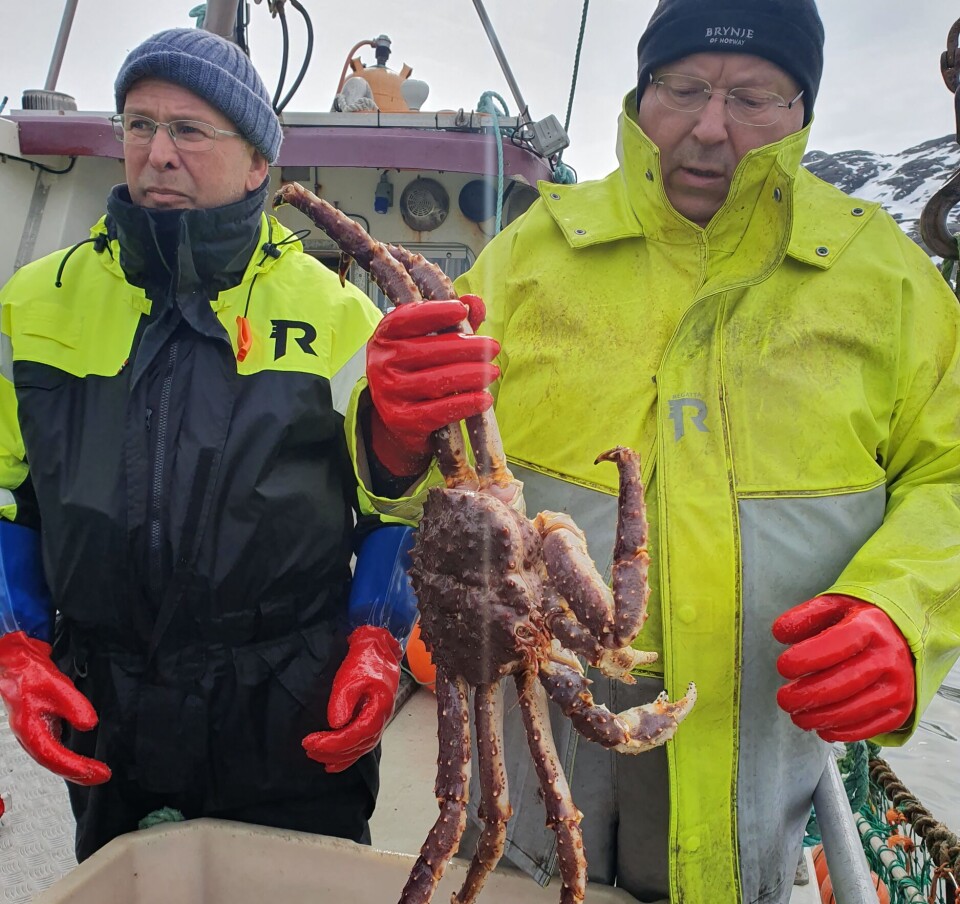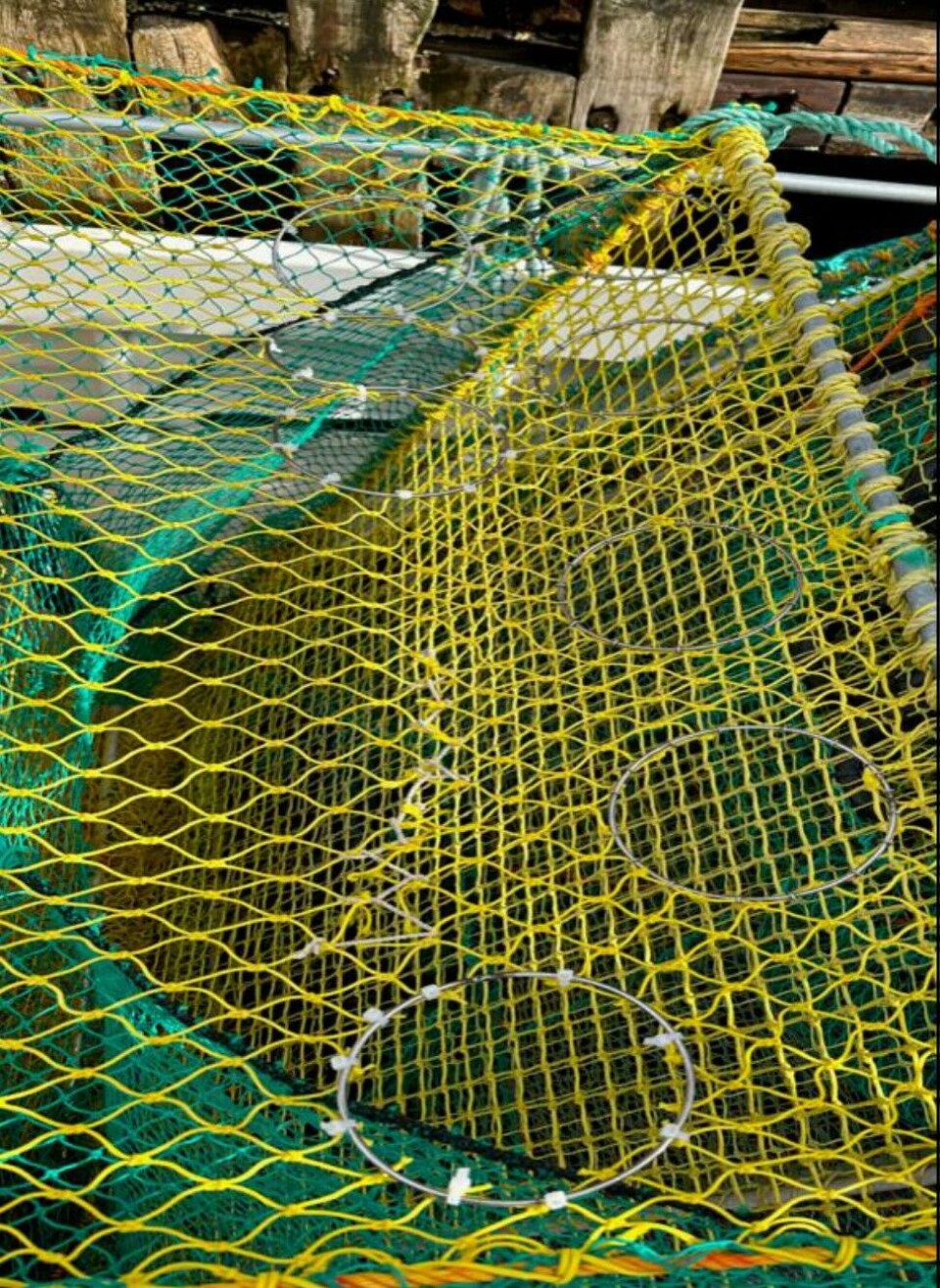THIS CONTENT IS BROUGHT TO YOU BY Nofima The Norwegian Institute of Food, Fisheries and Aquaculture Research - read more
Red king crab fishing: New pots aim to capture only the large and meaty male crabs
"The aim is to catch the male crabs in the pots, while female crabs and undersized crabs escape," says crab researcher. The solution appears to be as simple as it is effective.

Researchers have now prepared a report after two years of testing, comparison, and field documentation.
The solution can contribute to greater fishing yields, better management of the red king crab population, and improved animal welfare.
The researchers are talking about something as simple as making pots with more and better escape routes. This way, only the largest crabs are caught. As a result, the population gets better conditions to develop in the right direction.
“The aim is to catch the male crabs in the pots, while female crabs and undersized crabs escape,” explains senior researcher Sten Siikavuopio at Nofima.
A tool that helps preserve the population
The red king crab is important for both fishermen and the seafood industry in Finnmark. Norway exported 2,500 tonnes of red king crab, valued at NOK 1.2 billion (109 million USD), in 2023.
In recent years, however, quotas have been drastically reduced due to challenges in maintaining stock.
“Developing gear that better contributes to preserving the stock has therefore been imperative,” says Siikavuopio.
Today, only collapsible single-chamber pots are used for catching red king crab along the Finnmark coast. Even with escape routes in the crab pot, it is not uncommon for up to 80 per cent of the catch to consist of undersized crabs. These have to be sorted out.
The minimum size for catching red king crab is 13 centimetres, measured from the eye socket to the indentation behind the carapace. Crabs that are smaller than this are called undersized. They cannot be harvested in commercial fishing (Institute of Marine Research).
Outside the quota-regulated area, fishing is unrestricted, and there is no minimum size for red king crab.
“Currently, the entire catch is brought aboard the vessel, where undersized crabs are separated and returned to the sea. Sorting and handling of the crabs leads to impact injuries and crush injuries," says the crab researcher.
He further explains that additional injuries can occur when the crabs are thrown back into the sea by fisherman. During the lifting of the pot itself, some crabs also get stuck in the mesh. This increases the risk of crabs losing a leg or a claw.

The latter causes the crabs to lose vale in the commercial market. It also makes them more vulnerable to predators before capture.
Impact injuries, crush injuries, and limb loss are also concerns for animal welfare.
Siikavuopio emphasises the need to maximise the sorting of undersized crabs in the water rather than on deck.
“On-board sorting is labour-intensive and time-consuming,” he says.
A forward-thinking approach to fishing
The goal of the research was to compare and document the effectiveness of commercial red king crab pots with four escape openings – known in technical terms as selection rings – against pots with twice as many opportunities for female and undersized crabs to escape.
“A sustainable fishery for red king crab starts with fishing gear that does not damage the stock and fishes selectively on size. A not uncommon situation today is that a commercial red king crab pot with mandatory escape routes can have up to 200 kilograms of undersized crabs," says Siikavuopio.
He also notes that the proportion of injured crabs and female crabs is higher in pots with four selection rings compared to those with eight.
"This contributes to degrading the red king crab stock in a most future-oriented fishery," he says.
A win-win situation
For professional fishermen, pots with more escape openings are also preferable.
Crab fisherman Erling Haugan has participated in numerous field research projects with Nofima over the years. Together with his colleagues in Eastern Finnmark, he has observed that today's crab pots often fail to sort crabs effectively.
Both the fishermen and researchers have come to a simple conclusion: Increasing the number of escape routes from four to eight makes the pots more sustainable.
Haugan points out that this improvement to the fishing gear allows for the sorting of undersized crabs before they are brought on board and risk injury.
He adds that another key benefit of increasing the number of escape openings is that the supply of large crabs will incease, and fishermen will spend less time sorting crabs on deck.
"In this case, we will get a win-win situation where we take care of the resource in a sustainable way,” says Haugan.
Reference:
Siikavuopio et al. Et mer bærekraftig teinefiske etter kongekrabbe ved økt antall rømningsveier (A more sustainable pot fishery for red king crab through an increased number of escape routes), Nofima report, 2024.

This content is paid for and presented by Nofima The Norwegian Institute of Food, Fisheries and Aquaculture Research
This content is created by Nofima's communication staff, who use this platform to communicate science and share results from research with the public. Nofima is one of more than 80 owners of ScienceNorway.no. Read more here.
More content from Nofima:
-
Pumpkins are good for more than just Halloween decorations
-
This is how temperature affects a salmon's health and growth
-
Study: Omega-3 and zinc is a powerful duo for salmon
-
Fish may turn yellow if frozen too fresh
-
Is it better if food is packaged in plastic or paperboard?
-
Researchers make healthy salmon feed from polluting CO₂




































